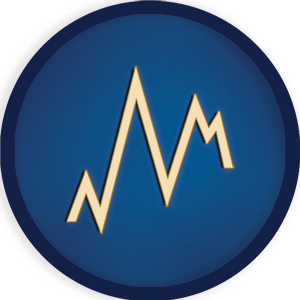1. AnnoyClassifier¶
1.1. Importing Packages¶
from mlots.models import AnnoyClassifier
from sklearn.model_selection import GridSearchCV
from scipy.io import arff
import matplotlib.pyplot as plt
import pandas as pd
import numpy as np
import warnings
from sklearn.metrics import accuracy_score
warnings.filterwarnings("ignore")
import matplotlib
%matplotlib inline
font = {'size' : 22}
matplotlib.rc('font', **font)
1.2. Loading Data¶
Here we are loading the
SmoothSubspace dataset.The datasets are in two
.arff files with pre-defined train and
test splits.The following code reads the two files stores the
X (time-series
data) and y (labels), into their specific train and test sets.
***name = "SmoothSubspace"
dataset = arff.loadarff(f'../input/{name}/{name}_TRAIN.arff'.format(name=name))[0]
X_train = np.array(dataset.tolist(), dtype=np.float32)
y_train = X_train[: , -1]
X_train = X_train[:, :-1]
dataset = arff.loadarff(f'../input/{name}/{name}_TEST.arff'.format(name=name))[0]
X_test = np.array(dataset.tolist(), dtype=np.float32)
y_test = X_test[: , -1]
X_test = X_test[:, :-1]
#Converting target from bytes to integer
y_train = [int.from_bytes(el, "little") for el in y_train]
y_test = [int.from_bytes(el, "little") for el in y_test]
X_train.shape, X_test.shape
((150, 15), (150, 15))
Set |
Sample size |
TS length |
|---|---|---|
Train |
150 |
15 |
Test |
150 |
15 |
1.3. Evaluating AnnoyClassifier¶
1.3.1. Default parameters¶
We would employ
AnnoyClassifier model from the mlots python
package.First, the model is evaluated with default parameters over the
SmoothSubspace dataset. ***model_default = AnnoyClassifier(random_seed=42).fit(X_train,y_train)
y_hat_default = model_default.predict(X_test)
acc_default = accuracy_score(y_test, y_hat_default)
print("Model accuracy with default parameters: ", round(acc_default, 2)*100)
Model accuracy with default parameters: 87.0
The accuracy of the model is 87%, which is already a good classification accuracy. However, lets see if we can squeeze in more effective performance.
1.3.2. Model tuning¶
AnnoyClassifier model allows us to work with a more complex
distance measure like DTW in a MAC/FAC strategy.Here, we would use
GridSearchCV algorithm from the sklearn
package to find the best set of parameters of the model over the
dataset.The model tuning would be done only over the
train set of the
dataset. ***#Setting up the warping window grid of the DTW measure
dtw_params = []
for w_win in range(1,6,2):
dtw_params.append(
{
"global_constraint": "sakoe_chiba",
"sakoe_chiba_radius": w_win
}
)
dtw_params
[{'global_constraint': 'sakoe_chiba', 'sakoe_chiba_radius': 1},
{'global_constraint': 'sakoe_chiba', 'sakoe_chiba_radius': 3},
{'global_constraint': 'sakoe_chiba', 'sakoe_chiba_radius': 5}]
#Setting up the param grid for the AnnoyClassifier model with the DTW params
param_grid = {
"n_neighbors": np.arange(1,12,2),
"mac_neighbors": np.arange(15,50,5),
"metric_params" : dtw_params
}
param_grid
{'n_neighbors': array([ 1, 3, 5, 7, 9, 11]),
'mac_neighbors': array([15, 20, 25, 30, 35, 40, 45]),
'metric_params': [{'global_constraint': 'sakoe_chiba',
'sakoe_chiba_radius': 1},
{'global_constraint': 'sakoe_chiba', 'sakoe_chiba_radius': 3},
{'global_constraint': 'sakoe_chiba', 'sakoe_chiba_radius': 5}]}
#Executing the GridSearchCv over the AnnoyClassifier model with the supplied param_grid.
model = AnnoyClassifier(random_seed=42)
gscv = GridSearchCV(model, param_grid=param_grid, cv=5,
scoring="accuracy", n_jobs=-1).fit(X_train,y_train)
#Displaying the best parameters of AnnoyClassifier within the search grid.
best_param = gscv.best_params_
best_score = gscv.best_score_
print("Best Parameters: ", best_param)
print("Best Accuracy: ", best_score)
Best Parameters: {'mac_neighbors': 45, 'metric_params': {'global_constraint': 'sakoe_chiba', 'sakoe_chiba_radius': 1}, 'n_neighbors': 11}
Best Accuracy: 0.9933333333333334
1.3.3. Evaluation of tuned model¶
The parameters displayed above are optimal set of parameters for the
AnnoyClassifier model over SmoothSubspace dataset.Our next task is then to train the
AnnoyClassifier model over the
train set with the optimal set of parameters, and evaluate the
model over the held-out test set. ***model_tuned = AnnoyClassifier(**best_param,random_seed=42).fit(X_train,y_train)
y_hat_tuned = model_tuned.predict(X_test)
acc_tuned = accuracy_score(y_test, y_hat_tuned)
print("Model accuracy with tuned parameters: ", round(acc_tuned, 2))
Model accuracy with tuned parameters: 0.98
By tuning the parameters of the model we increased the accuracy of the model from ~\(87\)-\(90\%\) to \(98\%\).
1.4. Comparison¶
Here we do bar-plot that would illustrate the performance of the
AnnoyClassifier model with default parameters against the
model with the tuned parameters.The
matplotlib.pyplot is employed for this task. ***acc = [acc_default*100,acc_tuned*100]
rows = ["AnnoyClassifier-Default", "AnnoyClassifier-Tuned"]
df = pd.DataFrame({"models": rows, "Accuracy":acc})
fig = plt.figure()
ax = df['Accuracy'].plot(kind="bar", figsize=(12, 8), alpha=0.7,
color=[
'skyblue'
], label = "Accuracy")
ax.set_xticklabels(df['models'])
ax.set_ylabel("Accuracy (%)")
ax.set_ylim(0,100)
plt.setp(ax.xaxis.get_majorticklabels(), rotation=0)
for i,a in enumerate(acc):
ax.text(i-0.2,a-5,str(round(a,3))+"%")
plt.text
plt.title("Model Performance")
plt.show()

